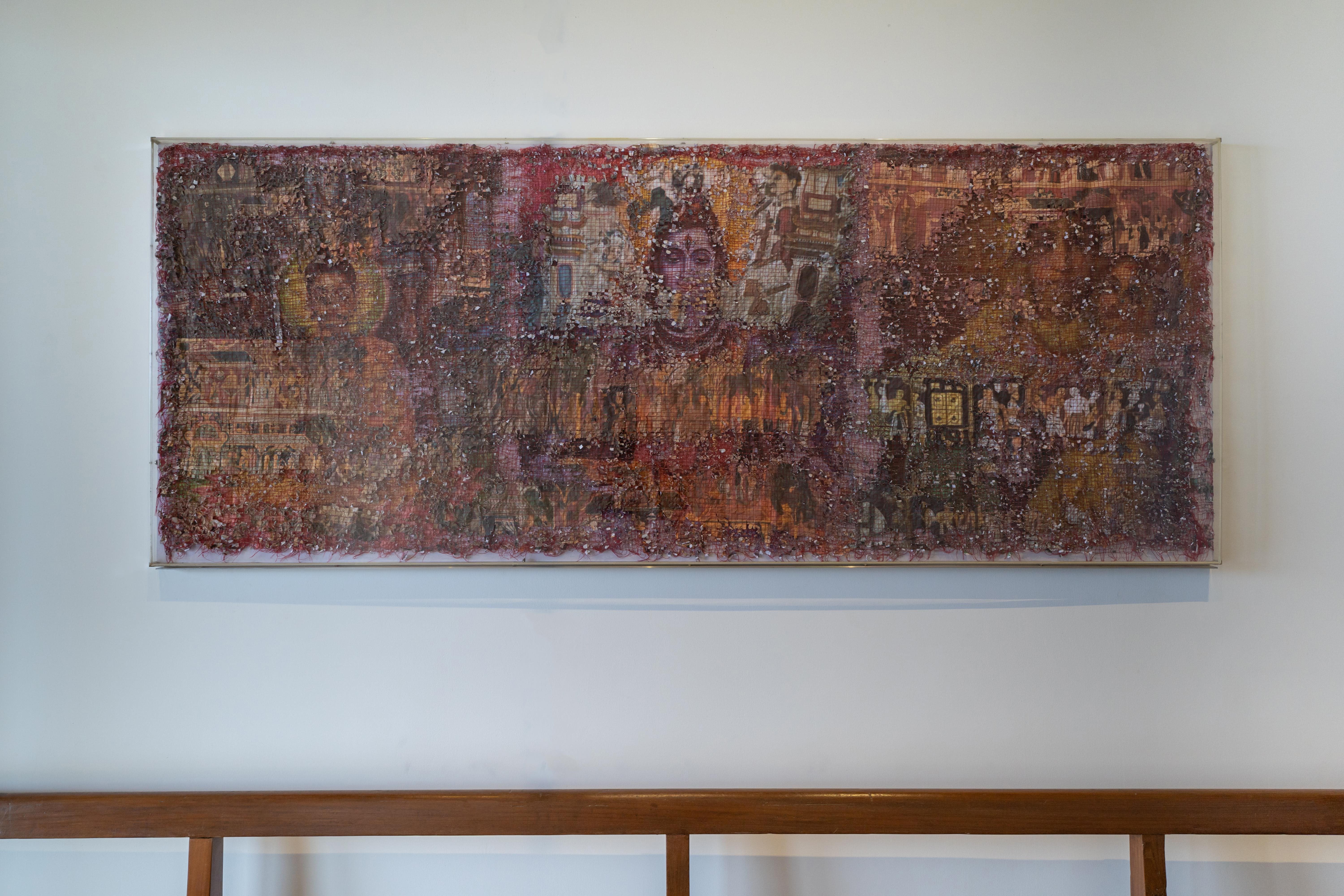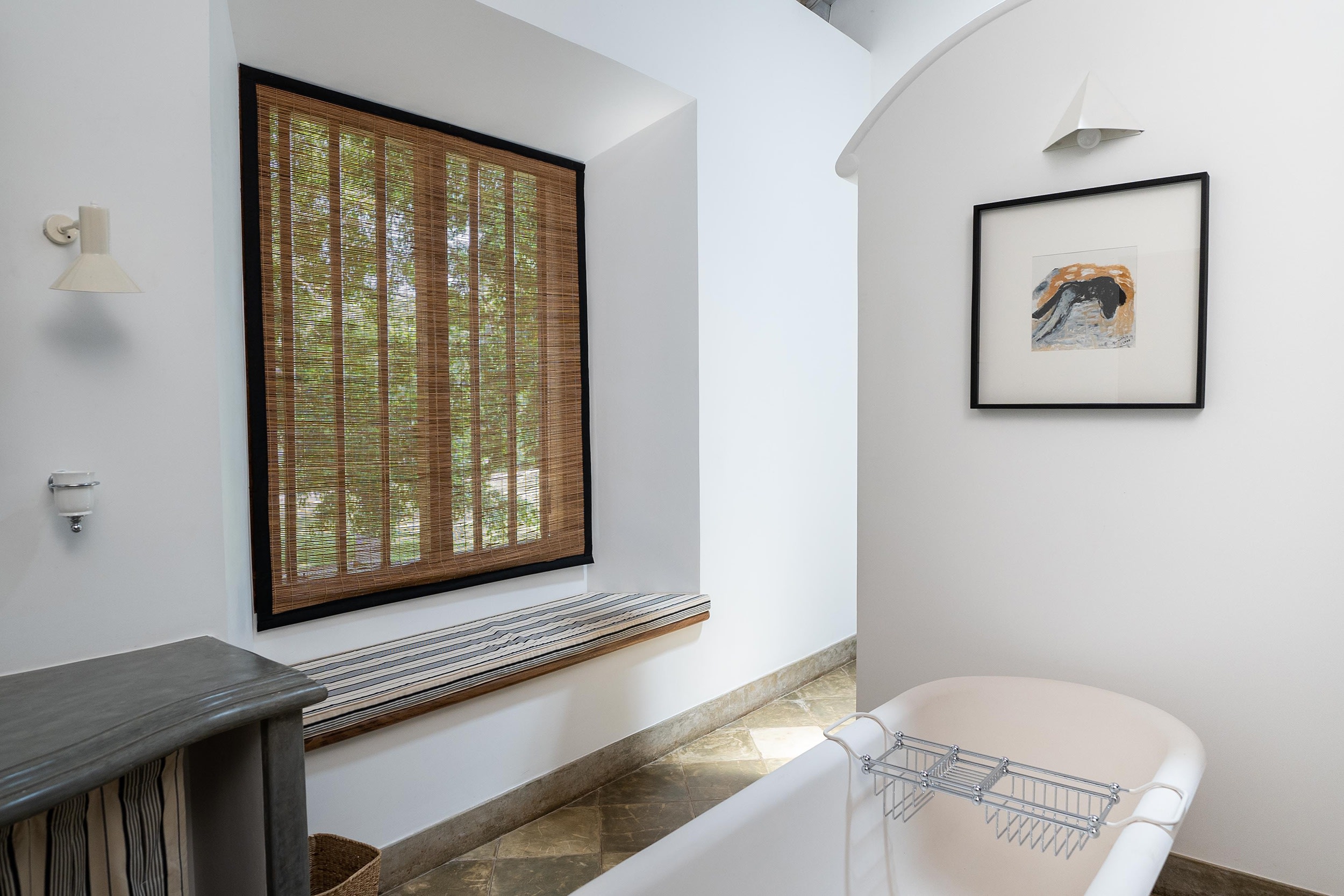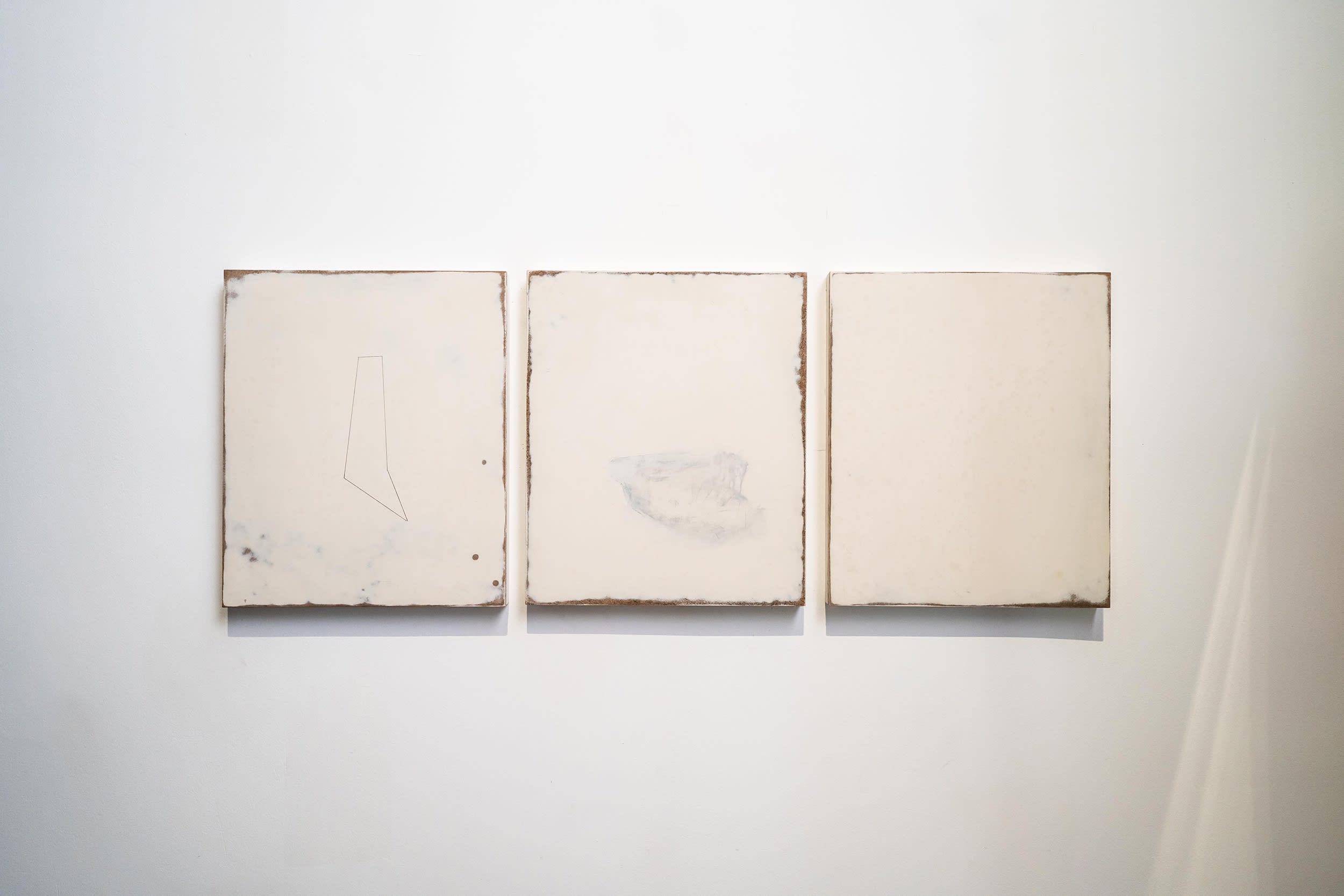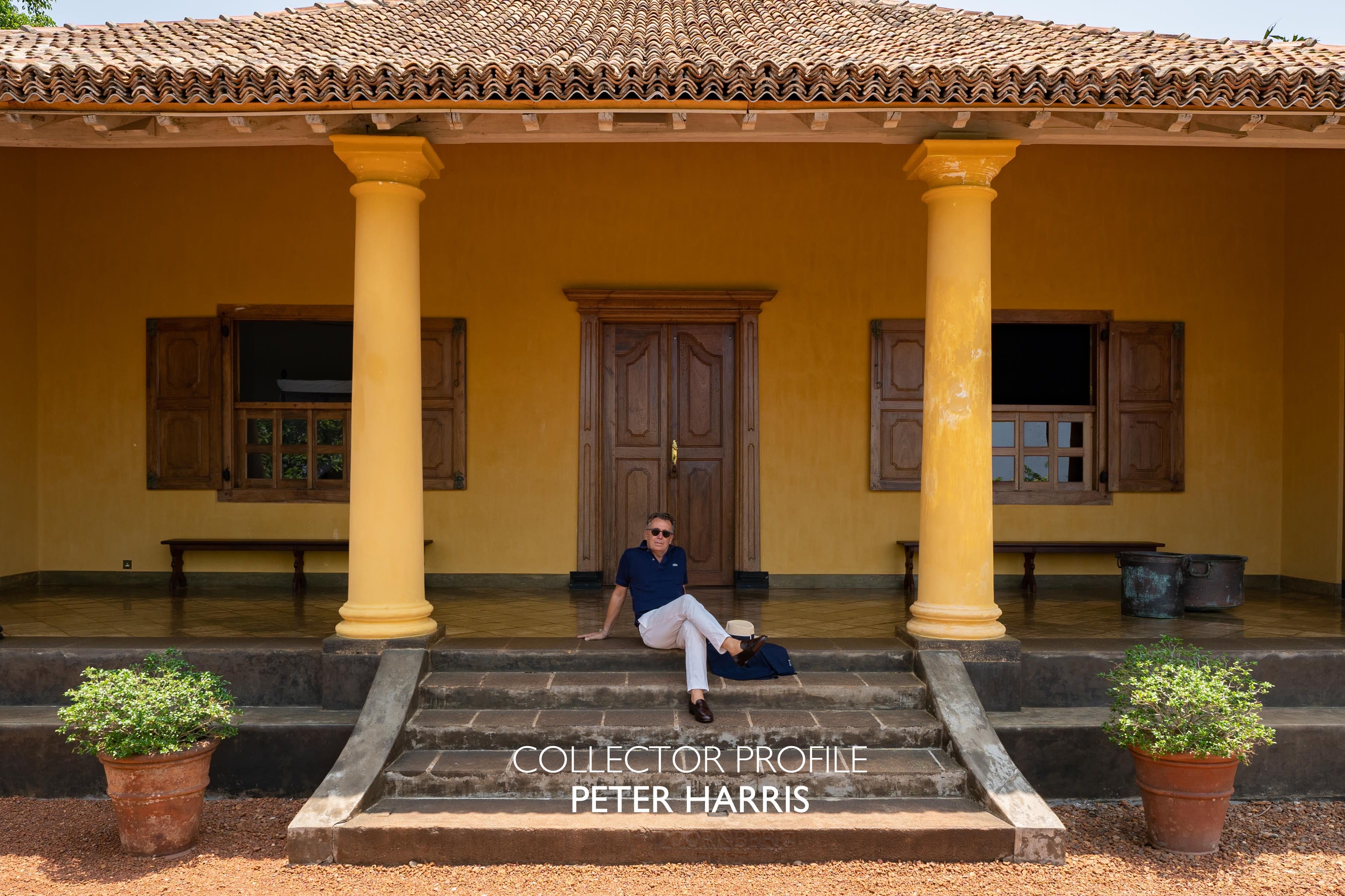 |
|
Peter Harris’s Dutch era mansion in the heart of Galle showcases an eclectic collection of modern and contemporary art from Sri Lanka, Australia, and China. His carefully curated selection of minimal and figurative works by Donald Friend, Chandraguptha Thenuwara, Jagath Weerasinghe, Fabienne Francotte, Hema Shironi, and Marisa Purcell reflects the collector’s refined taste in art and the experiences he has gathered from living in different parts of the world. |
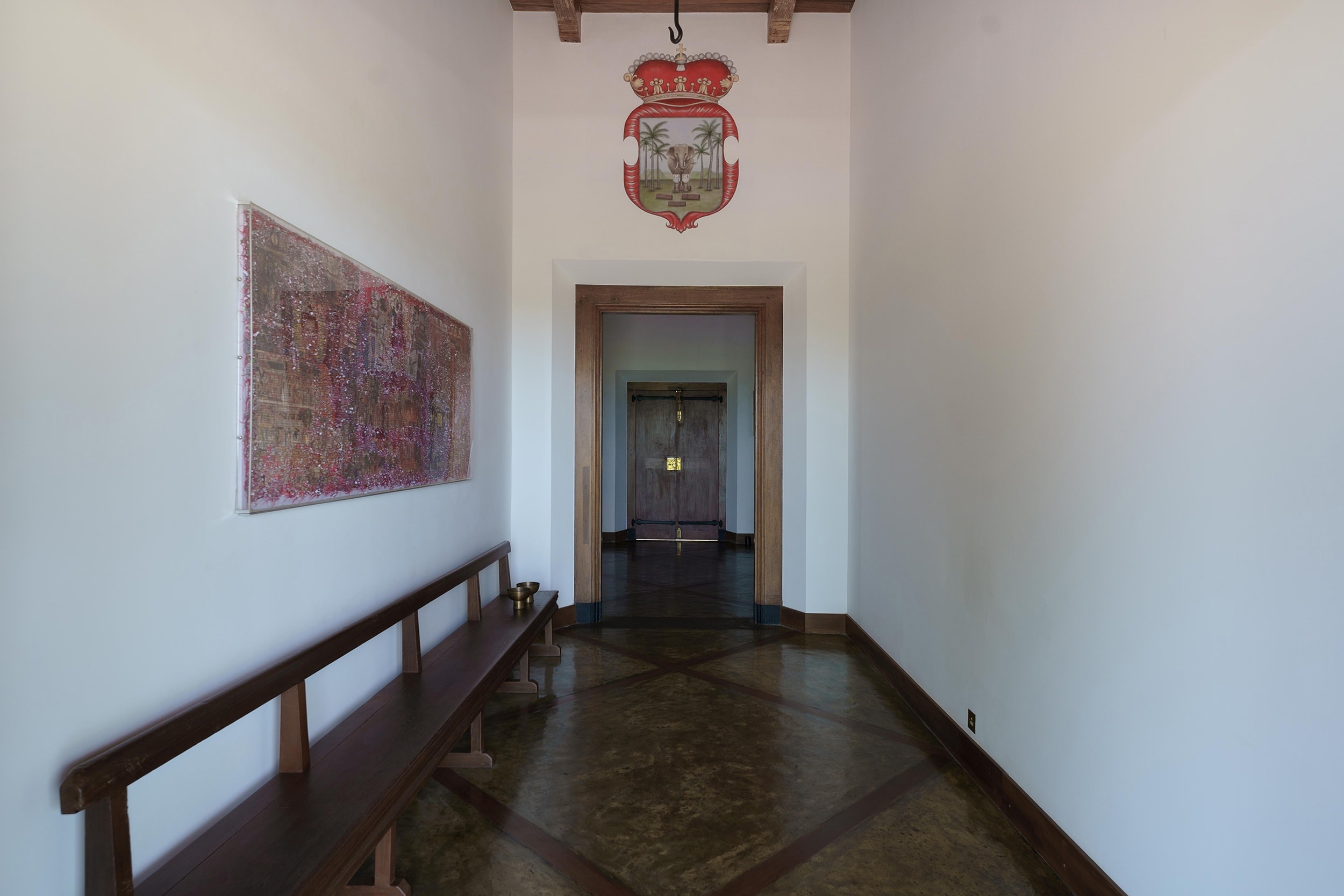 |
| Hema Shironi, Mended Fences II (2023) |
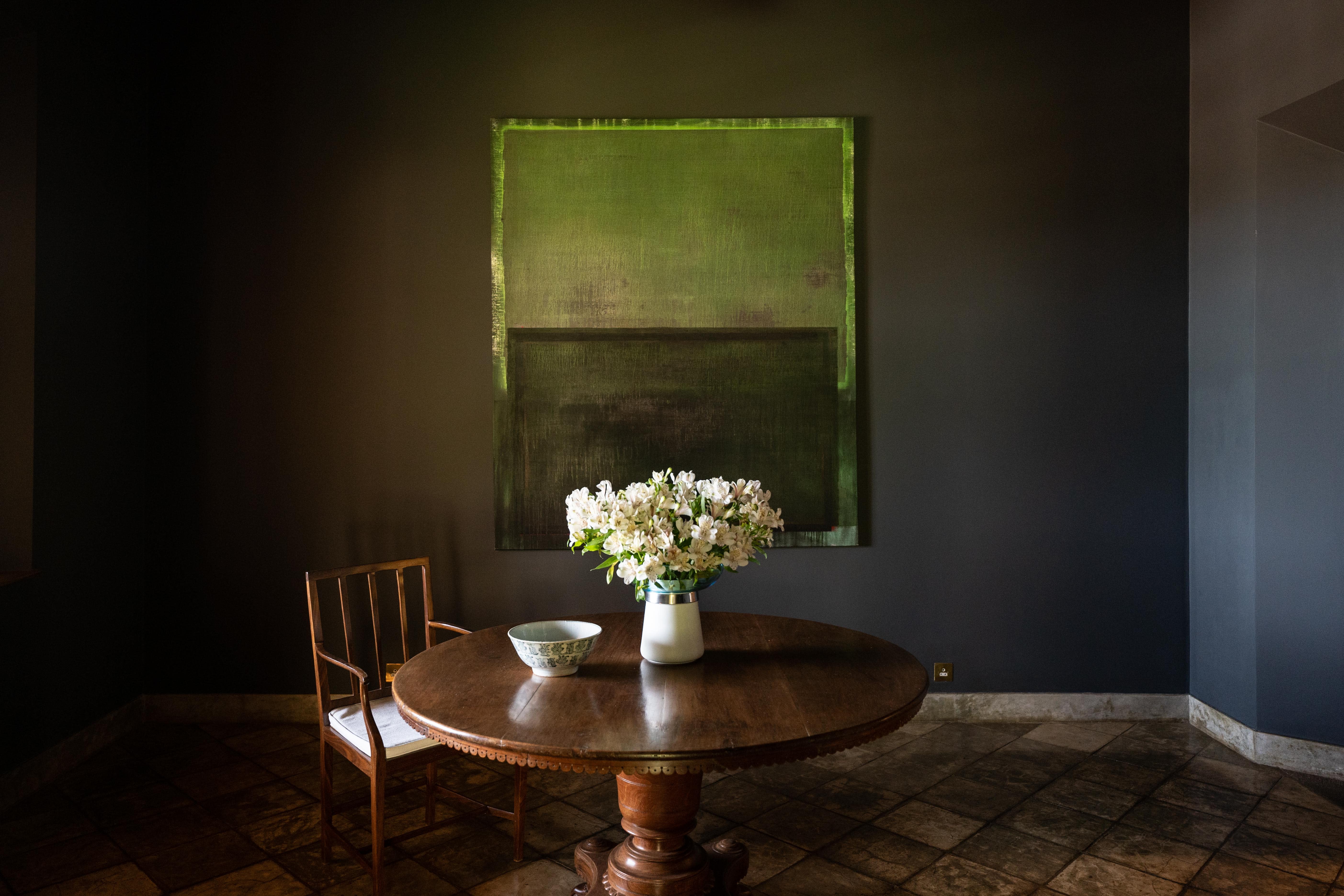 |
| Marisa Purcell, Certain Uncertainties (2020) |
TELL US A LITTLE BIT ABOUT YOURSELF.I have spent the last twenty plus years living between Hong Kong and Shanghai.My role of President within the Lane Crawford Joyce Group was that of leading a team in the work of selection, curation and management of an extended portfolio of international luxury retail brands across Greater China and South East Asia.
Prior to making my home in Asia, I lived in Florence, Italy. I was born and educated in Australia. The last eighteen months I have spent in Galle on a personal project, the restoration of a Dutch colonial house that was built in 1712. When did you first start acquiring art?I was influenced by a gift; the Donald Friend diaries, a four part volume printed by the National Library of Australia in 2005 .This substantive work, made a strong impression on me, and as a consequence of these publications, I began to collect pieces from this artist with a number of the early works being from his years spent living in Sri Lanka.
The volume which specifically chronicled Donald Friend’s time living at Brief in Sri Lanka, particularly peaked my interest and was the motivation to make the first visit to Sri Lanka in 2005. |
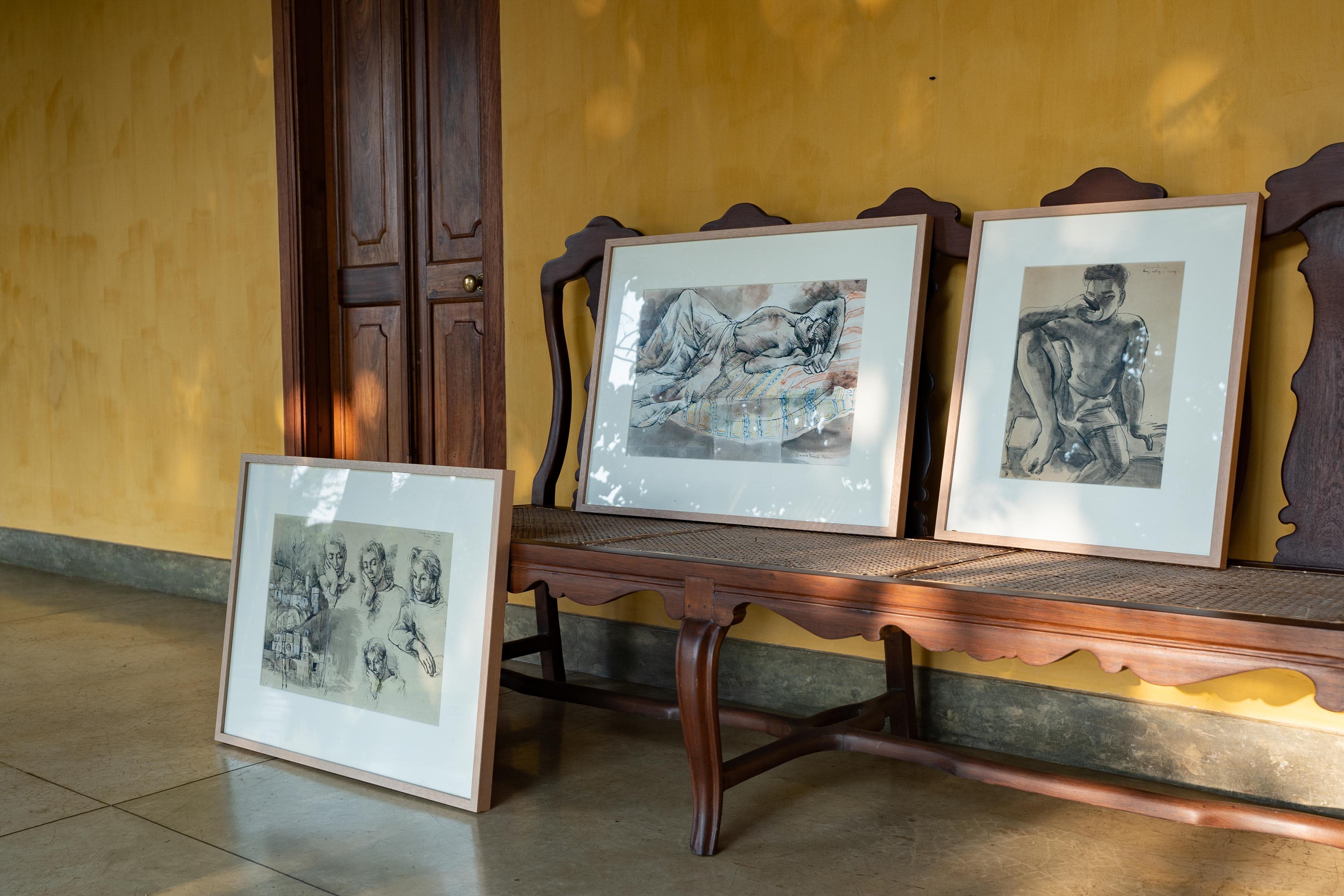 |
| Donald Friend, Eating a Mango (1941) Guiseppe (1950) & The Reclinig Ceylon (1958) |
Would you say that the places you have lived in have shaped your perception and appreciation of art?Yes most definitely. Places visited and lived in develop perception and appreciation.
Italy provided unlimited access to the great works. My apartment was near to the Accademia Gallery in Florence, affording me the opportunity for weekly visits to Michelangelo sculptures in the glory of their raw form. In Italy, like most countries, art is not confined to galleries or museums. Buildings, fountains, gardens, all provided daily and continuous opportunity for appreciation.
Living in Shanghai was to witness the birth of the artist and art in contemporary China. This birth was very much facilitated by the network of galleries that developed to enthusiastically champion all that was new. It was a moment that offered a unique insight into a movement in a country that’s had been dominated for centuries by a classical art form.
The last eighteen months spent in Sri Lanka has allowed me to reconnect with my interest in Sri Lankan art, the process of collecting is one of understanding more deeply the country you are living in. |
|
|
|
|
| Michael Cusak, Shi Yong & Chandraguptha Thenuwara |
IS THERE A PARTICULAR TYPE OF ART THAT YOU COLLECT?In addition to subject, technique is something I am drawn to. I have been clearly influenced by the time spent living in China, where I moved away from the complex and figurative to a more minimal subject.
I was very drawn to a piece I now own by Chandraguptha Thenuwara from his Glitch series. This in part was because it represented a bridge to some of the earlier pieces I had collected during the time I spent in China. As a collector it represented a continuity to earlier pieces . |
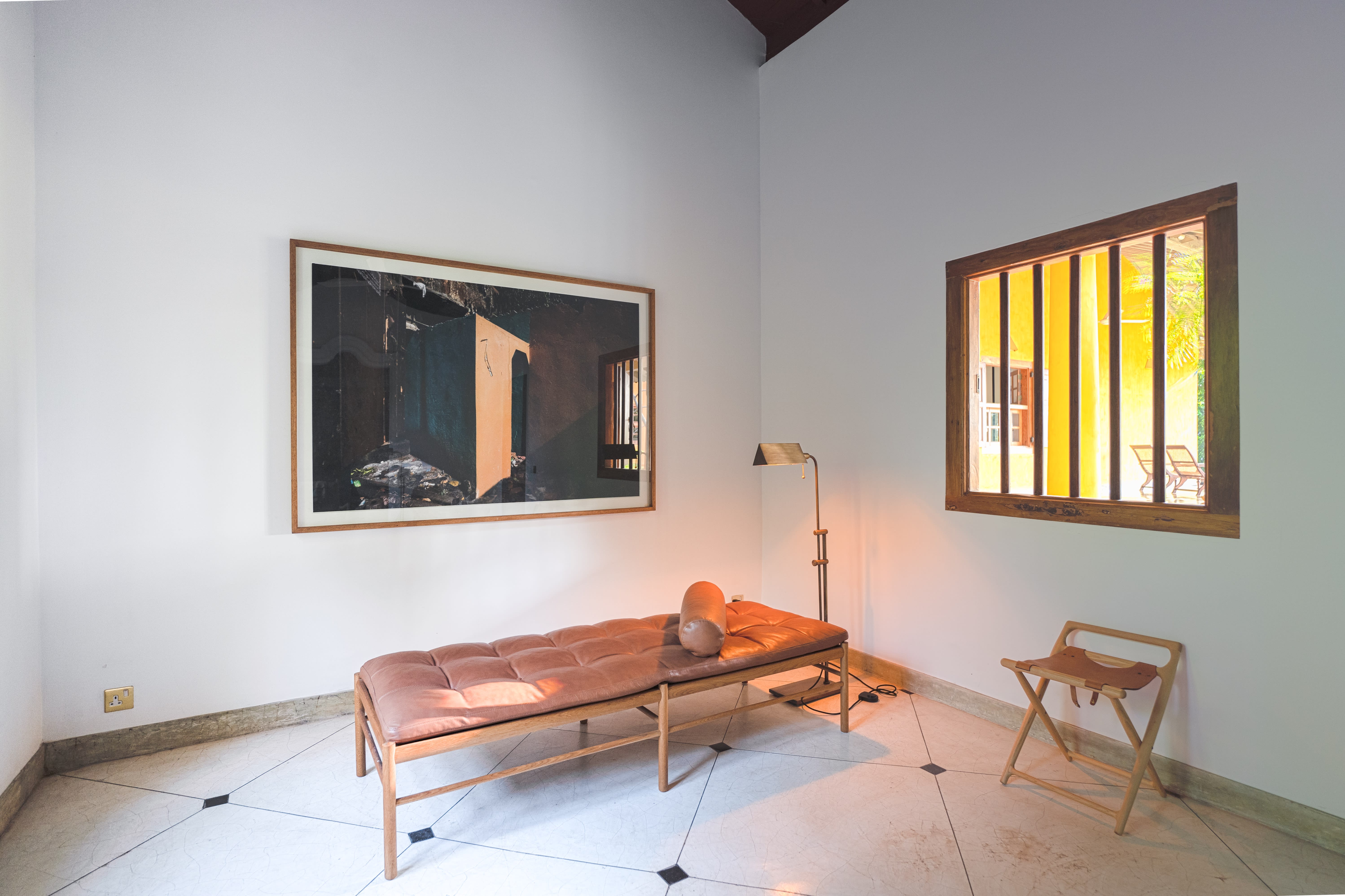 |
| Abdul Halik Azeez, day dreamer you are 35 (2021) |
|

